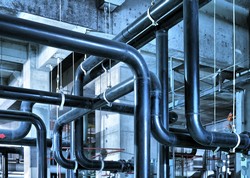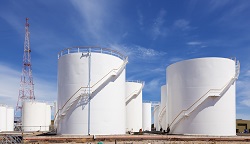Robotic tool to inspect unpiggable pipelines using long range ultrasound guided waves
Pipelines serve important functions for countries and citizens. They also represent a significant investment on the part of owners, typically specialised distribution companies with limited technical and engineering expertise. Maintenance and inspection are complicated, so robotic devices called pigs are sent down to flow through the pipes and perform various operations. In the EU-funded project PIGWAVES(opens in new window) (In-line service for internal inspection of unpiggable buried oil pipelines using long range ultrasound guided waves in fifty metre segments), scientists developed pigs sporting long-range ultrasonic testing (LRUT) technology exploiting guided waves. They conduct faster, cheaper and more accurate total-volume inspection in pipe segments of about 50 m in length. PIGWAVES project has addressed the need to develop an inspection tool for in-service non-destructive testing (NDT) inspection of unpiggable pipelines while at the same time replacing existing methods of inspection for piggable pipes with orders of magnitude less data storage time with consequent greater (robot) inspection speed and far quicker availability of the inspection results after robot recovery. The PIGWAVES system comprises of a fully equipped and independent NDT inspection robot that is capable of working in pipelines which carry liquids and particularly oil. The PIGWAVES robot swims down the pipeline in a non-inspecting mode. Every 50 m, the robot expands a probe collar and locks itself to the pipe. The collar utilises the LRUT technology to map the circumferential and axial pipe corrosion and cracks. It can inspect the area covered in a few milliseconds and reduces the amount of data stored by several orders of magnitude. The robotic system was designed to pass by dents, sharp bends, debris, valves and changing pipe diameters. PIGWAVES' advanced robotic crawler can inspect lines that are often inaccessible to traditional smart pigs. Featuring a diameter that is about 60 % smaller than common pipe diameters, it can traverse complex pipe geometries. To avoid collision with the pipe walls, the robot implements a set of wheel modules that can adjust their diameter and keep it always centred inside the pipe. A brake system is also installed to stop the robot inside the pipe before carrying out a new measurement. Another key feature of the system are neutrally buoyant robots that can float along the pipeline to perform cheap and rapid inspections despite the presence of obstacles, sharp bends, or reduced flow. Moreover, probes are every 40-60 metres reducing the measurement time. Other benefits include faster analysis due to the use of LRUT as the data from long pipes can be stored on a small robot. In addition, wireless in-pipe communication allows operators know the precise position of the robot. Types of damage are identifiable as well as thinning of the wall greater than 10 %. The PIGWAVES robotic pig is expected to have major impact on the safety of EU pipeline infrastructure and the security of the products it carries. This will have the side-effect of encouraging pipeline use as an alternative to vehicle transport, contributing to a reduction in harmful emissions.







